In 1998, superhero movies were in a slump. There hadn’t been a good Superman film in almost 20 years, and the Batman franchise, which had started with such a bang, had ended with a whimper and a yawn the year before.
Things were even worse for Marvel properties. Marvel Comics, so beloved of fanboys, had never made a successful transition to the big screen. There had been one successful TV series, The Incredible Hulk, which had dissolved into a series of awful TV-movie revivals. Besides that, there had been a forgettable Spider-Man TV series starring one of the Von Trapp kids, a few mostly forgotten TV movie/pilots featuring Captain America and Doctor Strange, and a couple of awful low-budget films featuring Captain America and the Fantastic Four (the latter film was never even released).
Clearly, with the rise of digital effects, this was a void waiting to be filled. Imagine our shock, however, when the first hero to kick off the new wave of Marvel theatrical adaptations was not the Fantastic Four, nor Spider-Man, nor the Hulk. It was a minor supporting character from the Marv Wolfman/Gene Colan run of Tomb of Dracula, a vampire hunter named Blade.
In the comics, he was a dude with an Afro and funky chin whiskers who killed vampires with wooden knives instead of stakes. But in the hands of director Stephen Norrington and screenwriter David Goyer (who has practically made a career out of comics adaptations, having also written screenplays featuring Nick Fury, Batman, and Ghost Rider), Blade was able to straddle the line between Marvel comics silliness and modern horror film aesthetics.
The film opens with this douchebag dude having scored his dream date by going dancing with former porn star Traci Lords.
She takes him to a weird rave club hidden in the back of a slaughterhouse. And as soon as they’re inside, she ignores him, and everybody else is really rude. But before he can decide to salvage his dignity by leaving, the DJ activates the blood bath, with real blood spewing out of the sprinklers, which freaks our guy out. He freaks out even more when he discovers that pretty much everyone else in the club is a vampire.
It’s a nicely creepy effect, exaggerated by jittery editing. But although it makes a stylish visual, the frugal part of me just wants to call BS on the idea of wasting food like that. Blood doesn’t grow on trees, you know. Anyway, things look pretty bad for the dude, until this guy appears.
He’s Blade, played by Wesley Snipes, and no matter how much blood splatters throughout the film, he never gets a drop on himself. The vampires react with exaggerated fear, given that there are like two hundred of them to one of him. On the other hand, he does have all the guns. He starts shooting vampires left and right, causing them to explode into ashes, and Traci Lords finds her featured role ending a little abruptly.
Finally, Blade runs out of vamps to kill, so he decides to question one guy in particular, named Quinn (Donal Logue, whom you may remember from Ghost Rider last week).
Blade doesn’t get any satisfactory answers, though, so he sets Quinn on fire and leaves. Man, if he keeps burning through cast members like this, there won’t anybody left for him to kill in the last half-hour of the movie.
Oh, wait. Quinn isn’t dead. He comes back to life on the autopsy table while being examined by hematologist Dr. Karen Jenson (N’Bushe Wright) and her ex-boyfriend, the coroner. Quinn kills the guy, and is putting the bite on Karen when Blade arrives.
Quinn escapes (minus a hand–it’s a running gag that Quinn keeps getting his hands cut off), and Blade takes Karen back to his warehouse headquarters. She meets Blade’s partner Whistler (Kris Kristofferson), who gives her an inoculation against vampirism.
Like Sam Elliott in Ghost Rider last week, Kristofferson is pretty good here, but mainly because he’s a crusty old man playing a crusty old man. There doesn’t seem to be a lot of acting involved, is what I’m saying. I may be wrong, however. Maybe in real life, Kristofferson is more like Richard Simmons and his Whistler is a tour de force.
And somewhere in here, we learn just why the vampires fear Blade so much: he is a “daywalker,” half-human and half-vampire (his mother was bitten while she was pregnant with him). He is as strong as any vampire, and able to heal much more quickly than a normal human, but he is able to walk in sunlight without a problem. We actually saw his birth in a pre-credits prologue, but the many, many questions raised by it are ignored (such as who raised him and how did he get his mom’s driver’s license).
Meanwhile, Quinn’s boss, Deacon Frost (Stephen Dorff), is planning something big involving a blood god named La Magra featured in ancient vampire prophecies. He’s mean.
Blade and Karen conduct a raid on a vampire data archive where they learn about the plot from a fat blob of a librarian named Pearl.
There’s a bit of back-and-forthing as Blade learns more about the prophecy and Karen finds a cure for her vampirism and Frost tries to lure Blade to his side. And Frost shows what a badass he is by dodging silver bullets.
The vampires attack Blade’s warehouse while he’s out, kidnapping Karen and fatally wounding Whistler, setting up the final confrontation. Blade attacks Frost’s headquarters, using a new weapon that hematologist Karen has developed–an anti-coagulant that has a pretty devastating effect on vampires.
See, she was a pretty Asian girl before this. And yes, she explodes. And no, Blade doesn’t get a drop on him. Then Blade is captured when he runs into his supposedly dead mother.
And not only has she pretty much forgotten what it was to be a human, she has also pretty much forgotten what it is to be a mother, because she almost makes out with Blade in this scene. It’s the creepiest thing in the entire movie.
Turns out Frost needs Blade’s blood to complete the summoning ritual for La Magra. Blade is trapped in a big 2001-esque monolith that drains his blood, which drips down onto 12 vampire lords, whose bodies disintegrate as winged spirits emerge from their mouths and surround and fly though Frost…
in a scene reminiscent of Raiders of the Lost Ark…
And later copied in Ghost Rider.
Blade finally kills Quinn and then has his final showdown with Frost. It’s an exciting climax that ties up all the threads pretty satisfactorily, if a little formulaic.
In a lot of ways, the film seems kind of perfunctory and by-the-numbers today. However, the film was a lot more influential than it looks, simply because it came out before a lot of the vast wave of urban fantasy that has swamped us since. And you could argue that Blade (and its sequels) actually inspired a lot of that wave.
Next week: Blade II


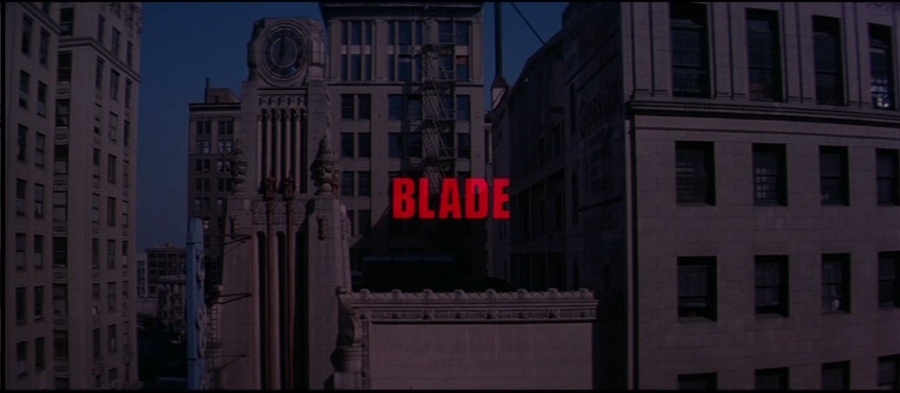
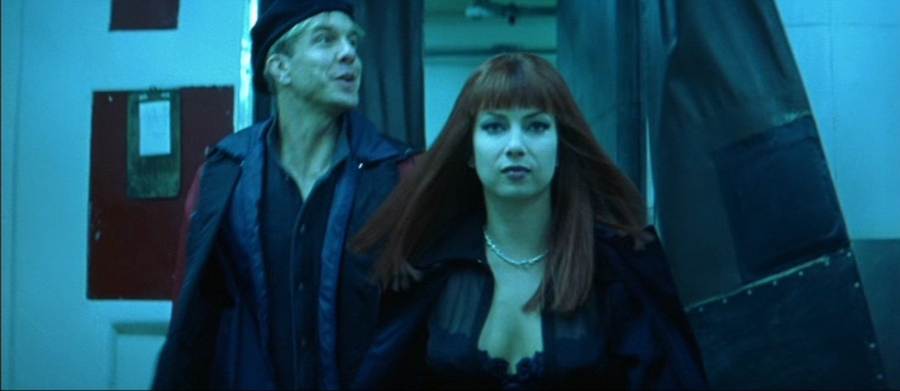
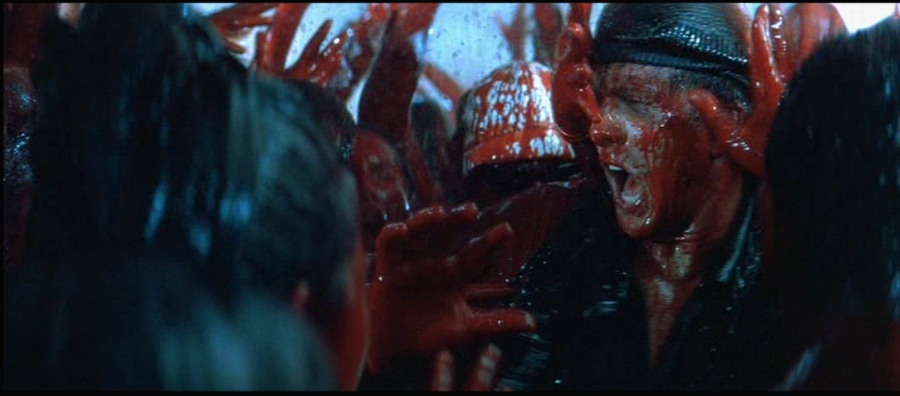
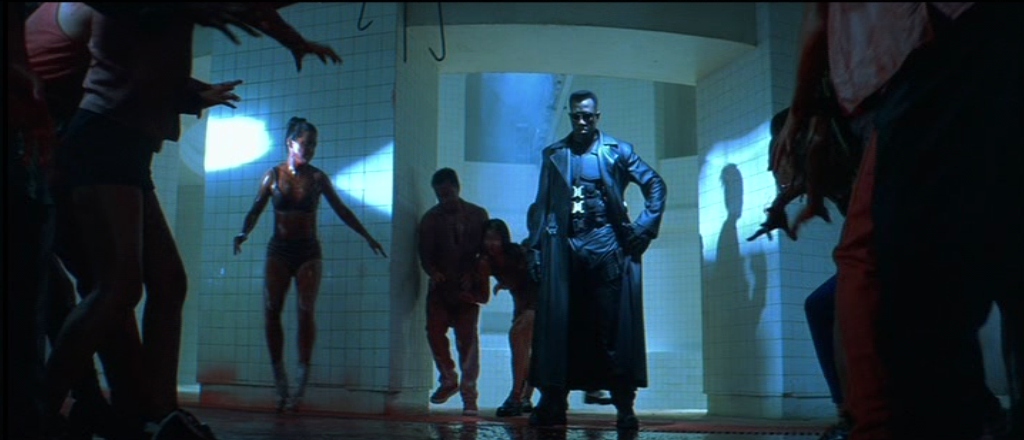
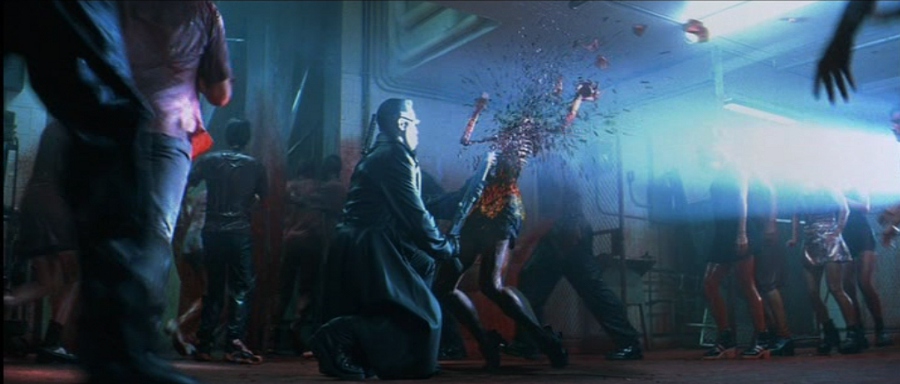
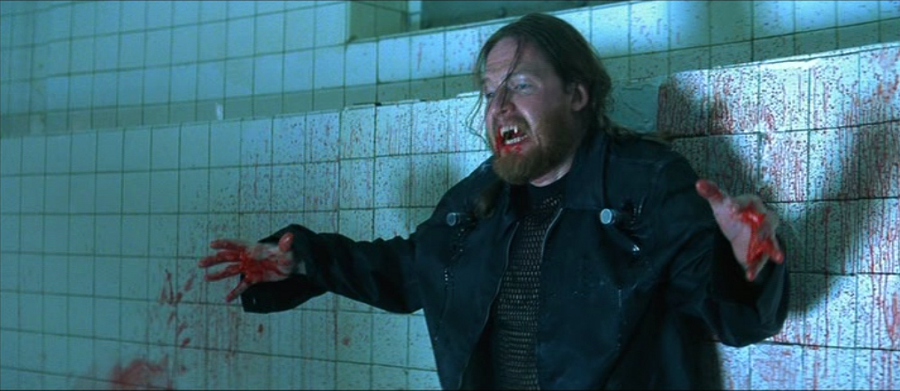
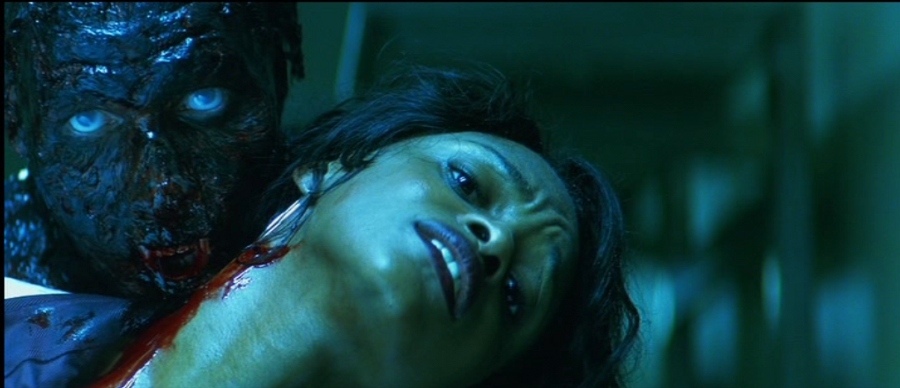
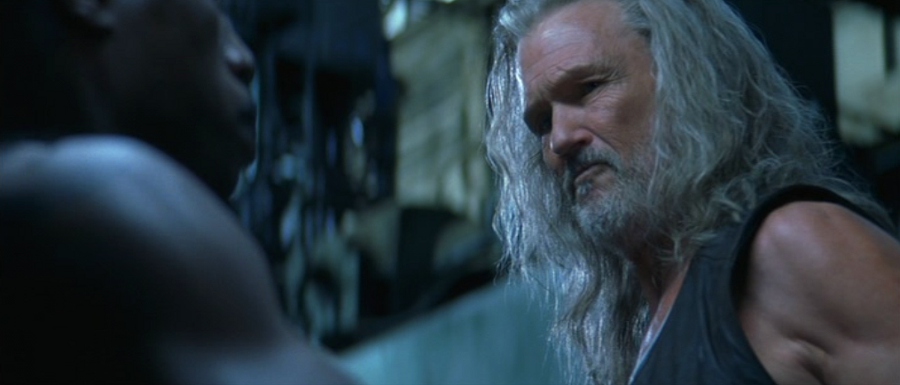
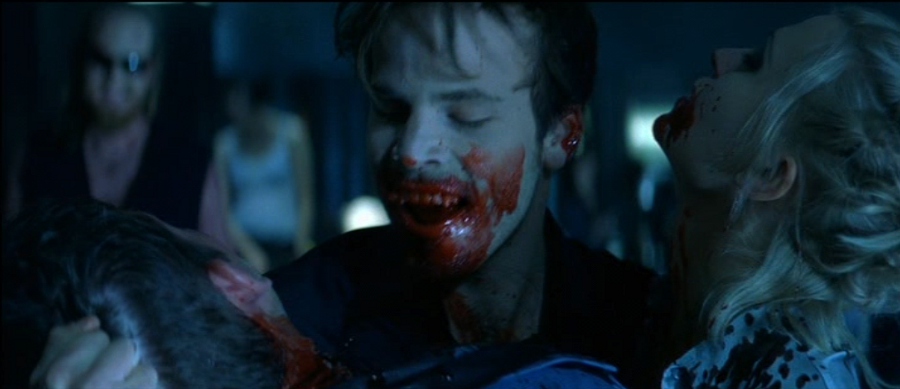
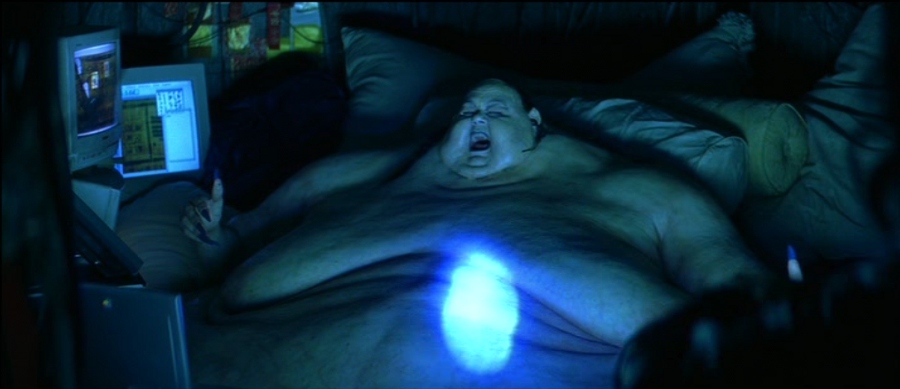
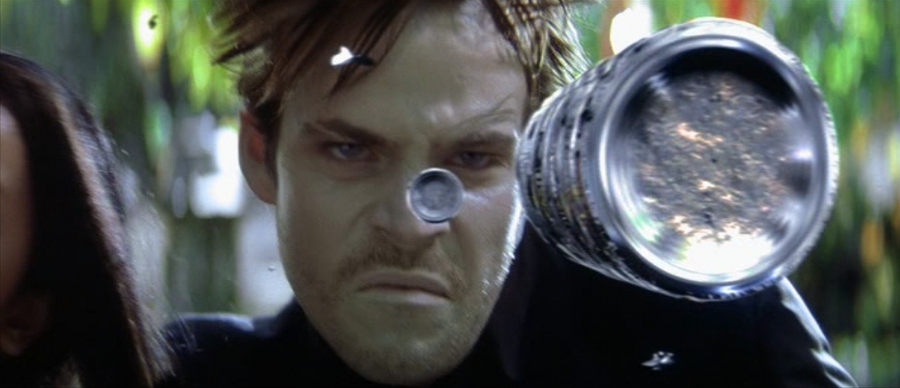
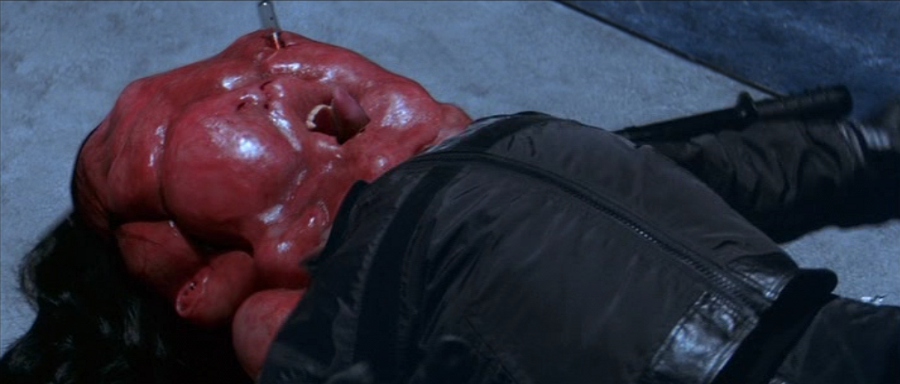
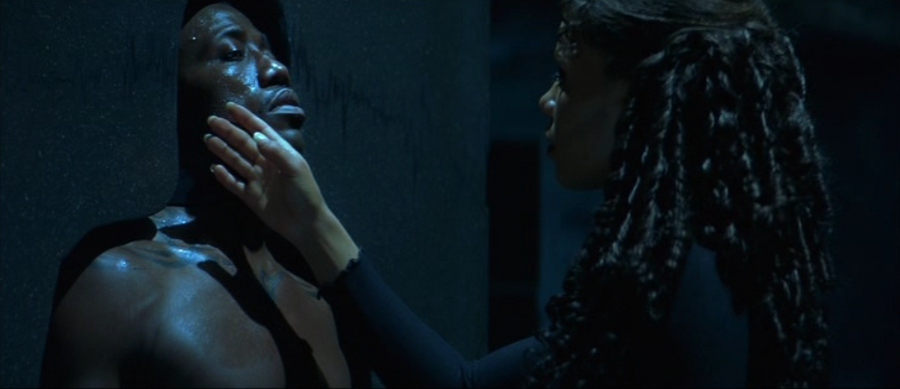
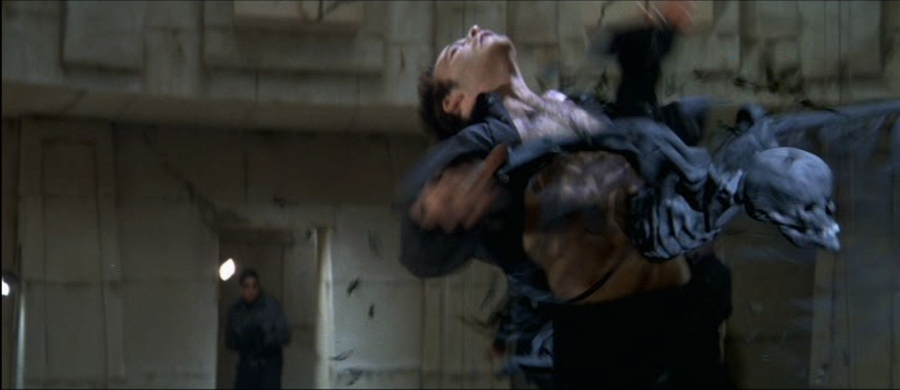
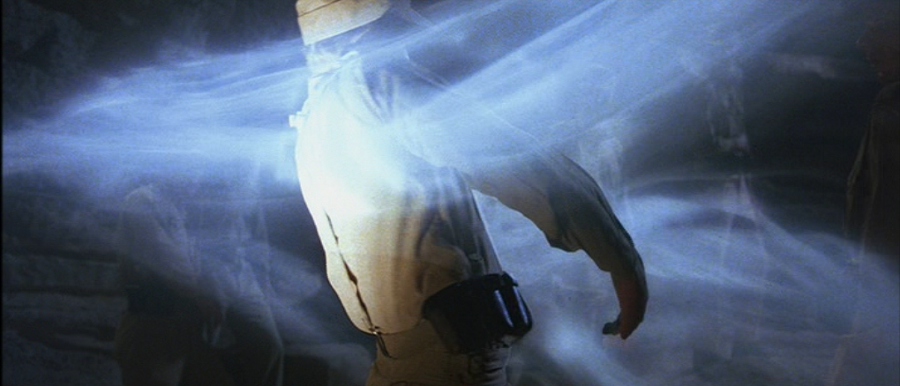
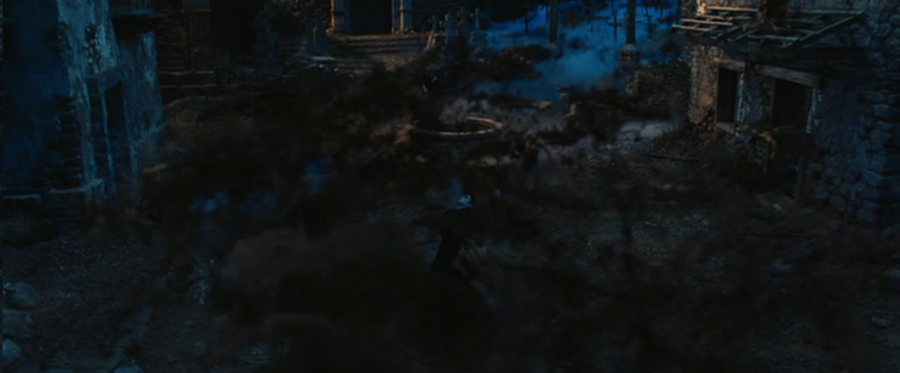




Don’t overlook how stylish Blade was, and how revolutionary that was for a supposed superhero film. Theo Van De Sande was the cinematographer, and I think it’s the only action movie he’s ever done, but he made it look gorgeous, with the deep blue tones in the vampire scenes contrasted with Blade’s deep, deep blacks. In the original prints they used an evaporated-silver printing process that provides the deepest blacks you can get on film.
It was stylish, which was why it made such a huge impact, not only for comic book adaptations, but also for urban fantasy. But like so many trailblazing films–like Star Wars and The Matrix–it looks a little underwhelming now, since it has inspired so many other films to try to one-up it.
I never saw it in the theater, so I can’t speak to the impact of the color on screen. Sounds cool.